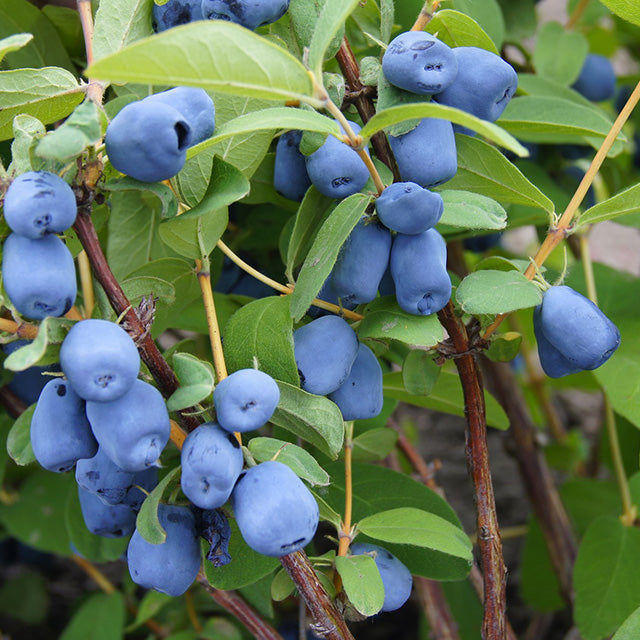We’re very proud that we grow our own haskap berries on our own, all-natural, farm in Nova Scotia. It’s been an incredible journey to get to this point. Here we’ll present a little of the adventure we’ve been on, and each month Farmer Cynthia will give us an update live from our farm, which we’ll share with you here.
When we first arrived on the farm, the fields were bare save for a lone tree at the top of the hill, which would become our namesake – Lone Tree Farm.

Preparing the land for planting our crops completely transformed the farm which you can see in this aerial view.
Laying sunbelt and preparing the basins for our haskap bushes. The sunbelt will help suppress weeds and hold moisture in the soil.
Tucking our plants into a blanket of coco disks to sustainably control weeds, no spraying required.
Grass is planted between rows to protect against erosion. Clover is planted in strategic areas to further deter the growth of weeds, and to supply food for our bees. The plants are now able to settle in and put energy into growing and producing haskap berries.

In the spring new growth sprouts from the haskap bushes, which will start to bud after receiving enough sunlight, nutrients, and water.
The buds begin to open into flowers which will soon be found by the farm’s hardworking pollinators.

Lone Tree Farm recognises native pollinators as vital to the success and health of our industry. We are proud to support native wildlife and are a certified bee friendly farm.
Two blossoms are pollinated by our happy busy bees, to create two berries inside an outer skin. The two brown spots show where the two blossoms have dropped from the berry they formed.
Here you can see in more detail that two haskap berries form inside an outer surrounding skin. The haskap berry contains particularly high levels of antioxidants because it is gently wrapped in this double skin, where most of the protective antioxidants are found.

Green berries form from the fertilised flower and begin to ripen into purple-blue fruit.

After much love and care the berries are ripe and ready for harvest.
Research and development are conducted throughout the year, improving our understanding of farming practices and contributing to the wider farming and scientific community.
Now our lone tree is alone no more…











